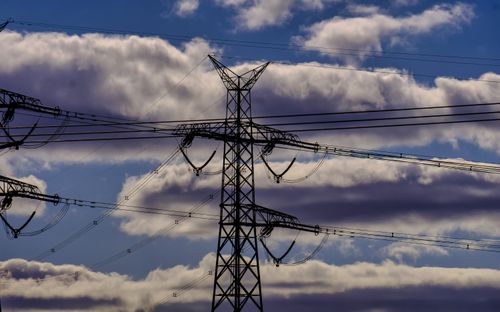From tax to power bills, insurance and telco plans, here are the ones to sort out in the next couple of weeks.

1. Get your tax deductions sorted
If you want to claim a deduction on your tax, you have to spend the money and get a receipt by June 30.
That’s why every retailer in town has big EOFY sales right now – they’re chasing your tax deduction dollars.
Work-related expenses can range from tech to furniture to stationary to clothing for some jobs.
Flight crew can even claim moisturisers and hair conditioners, for example.

So if you need anything work-related, it might pay to bring forward that purchase into June and cash in on the discounts, thereby reducing your taxable income for the year.
For example, this month you could buy:
- A new phone, laptop or printer
- A pre-paid 12-month mobile data plan
- New office furniture if you work from home
- Pay a subscription for the year ahead
- Your income protection insurance for the year ahead
- Or make charitable donations
2. Be smart about EOFY sales
If you know what you need, I recommend you don’t browse the sales.
That’s what they want you to do, so that you’ll make impulse buys on top of what you’ve decided you need for work.
Then you can buy the cheapest if it works for you.
If you do want to browse, I’d suggest websites that list a range of the best deals from individual retailers, such as Ozbargain, Little Birdie, Amazon, eBay and Kogan.
3. Health insurance cut-offs
June 30 is a key date for the take-up of health insurance because that is when a range of penalties kick in for some people who don’t have cover.
These penalties are the government’s way of trying to make people take out a policy.
For example, the lifetime health cover loading kicks in on June 30 if you’re over 30 years old and don’t have a hospital policy.
It means that if you take out a policy in the future, you’ll pay an extra two per cent for each year you’ve put it off after turning 30 – up to a maximum 70 per cent loading!
Read Related Also: Quinnipiac: John Fetterman has the same approval rating as Joe Biden and that's not good
The Medicare levy surcharge is another penalty for those who earn over $90,000 (or $180,000 for a household) and don’t have hospital cover.
You’ll pay some extra tax each year, on a sliding scale of up to 1.5 per cent extra depending on your income.
Sometimes health insurance only costs slightly more than the tax penalty.
Bupa estimates that a couple with two kids earning $200,000 will pay about $2000 in extra tax if they don’t have a policy – but they can get a basic, entry-level hospital and extras policy from around $2053.
Because it’s such a busy time of year for the industry, there are a lot of attractive offers for new members, such as:
- Nine weeks free over two years with AIA Health Insurance
- 10 weeks free over two years with Bupa
- 12 weeks free over two years with AHM
- Up to $450 switcher’s bonus with HCF (via One Big Switch, where I also work)
4. Power bills rising from July 1
Just about every energy plan in the country is going to rise some time in July or August – it’s almost unavoidable.
Then the majority of discount market offers – which most of us are on – will go up over July and August, probably by a similar amount.

Because of the incoming price hike, most current offers end on June 30.
- Get onto a cheap plan now if you’re not already – start at the government websites compare.energy.vic.gov.au (for Victoria) or energymadeeasy.gov.au (for NSW, south-east Queensland, South Australia and the ACT) and you can see what the cheapest deals are within minutes. Some plans are still 15-21 per cent below the government price, which can mean a saving of about $300 a year for an average home.
- There’s a range of offers with credits and cashbacks (up to $250, for example, if you switch to EnergyAustralia via Cashrewards), so take advantage of those too if they’re available on the plan you pick.
- Do a quick check when you get your price rise email in July or August to make sure your plan is still competitive. If not, switch! It’s so easy to do.
- You can even get a couple of fixed rate plans still, which won’t increase for six to 12 months. The best site to search these is wattever.com.au, where you can select fixed rate plans in the dropdown filters.
5. Telco plans going up too for millions
Telstra is hiking prices on its pre-paid and post-paid mobile plans in July by the rate of inflation, which is rampaging at close to seven per cent, so a lot of mobile customers are looking for cheaper options.
Fortunately, it’s one of the easiest bills to switch and there are about a dozen other providers that also offer service on the Telstra network, including:
- Belong (owned by Telstra)
- Aldi Mobile
- More Telecom
- Tangerine
- Woolworths Mobile
- Exetel
- Mate
- Nu Mobile
- Boost Mobile
While most of these have access to the Telstra wholesale network, which covers over 98 per cent of the population, Boost actually has access to the retail network, which covers over 99 per cent of people.
So Telstra customers should not feel trapped – they have options.
Start at Australia’s top telco comparison website Whistleout.com.au and search by network to see your options.
And remember that if you use your phone or internet for work, some of it could be tax-deductible.
Any advice is general and does not take into account your objectives, financial situation or needs. You should consider whether the advice is suitable for you and your personal circumstances and seek advice from a broker or adviser before acting.



